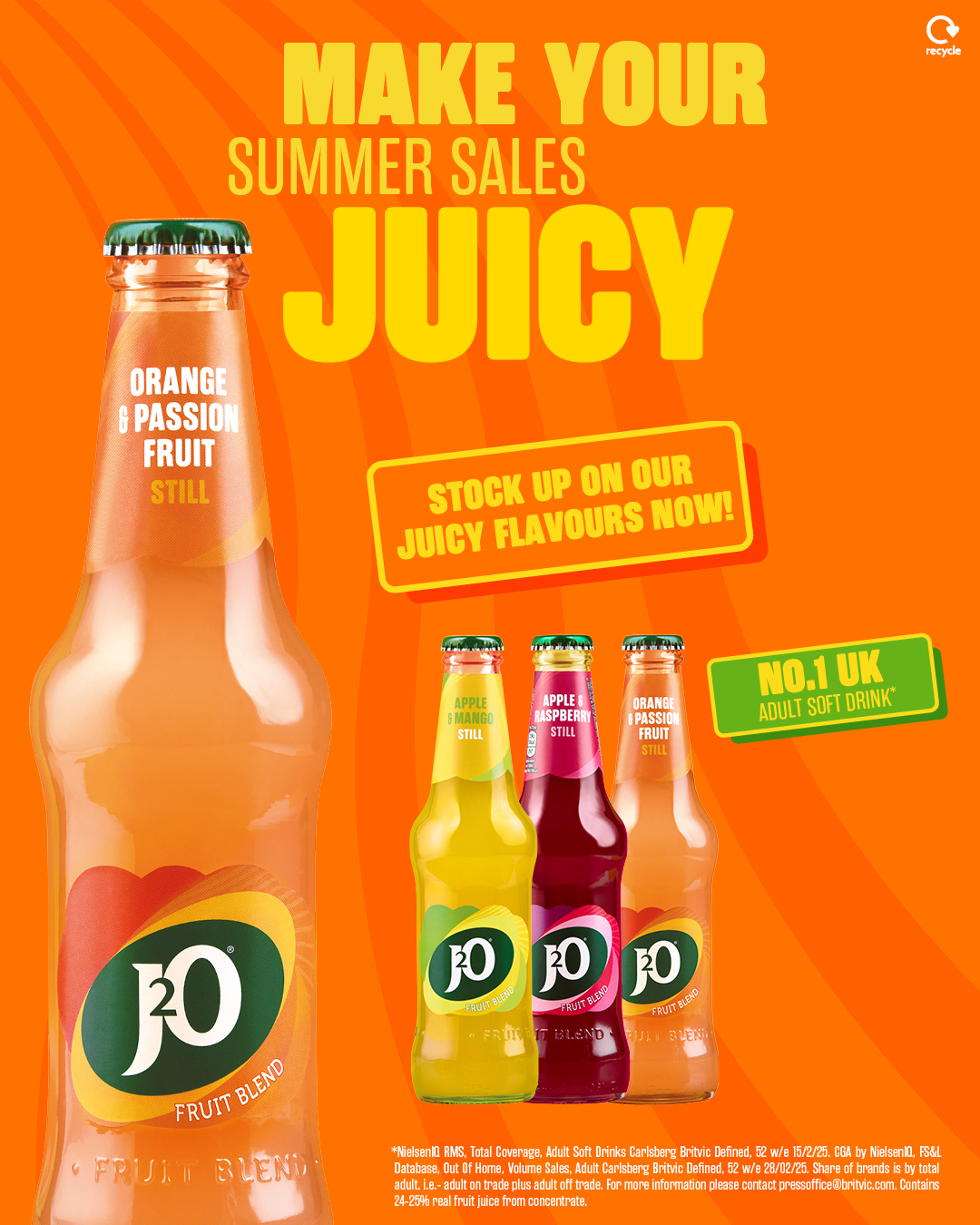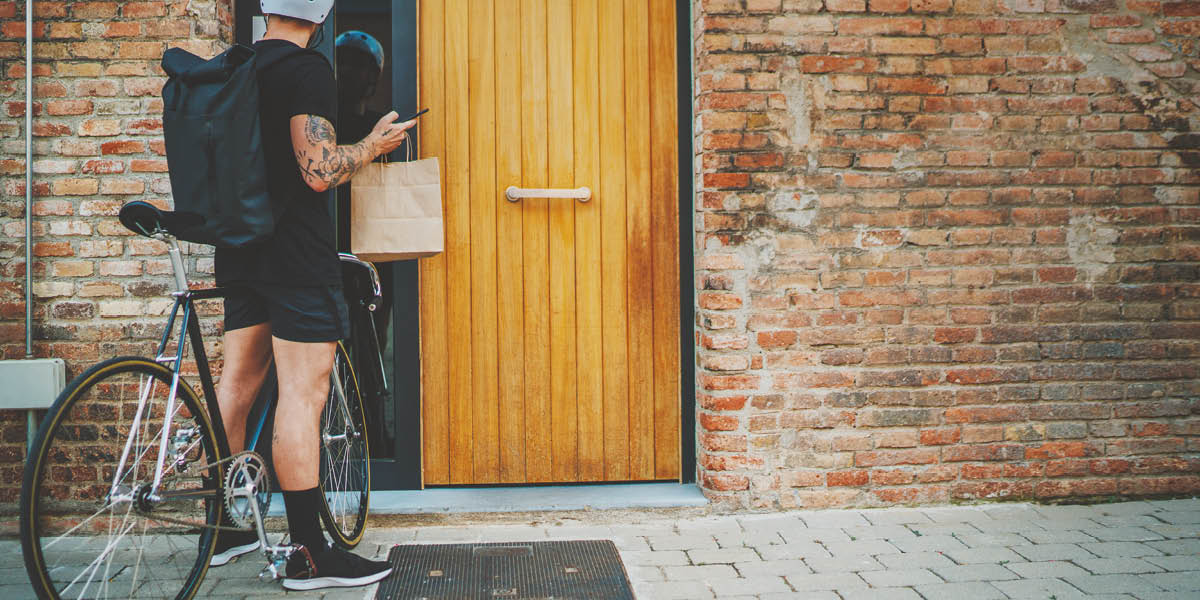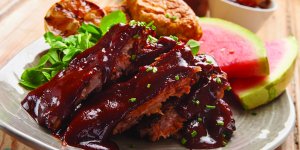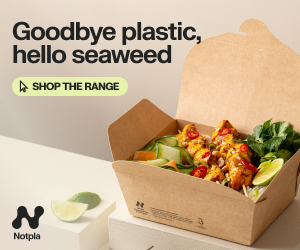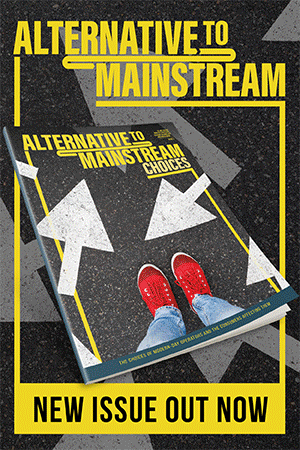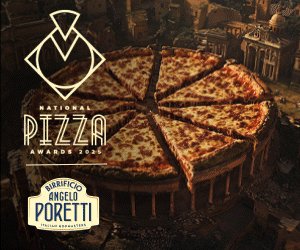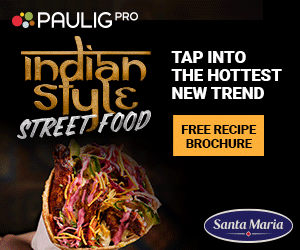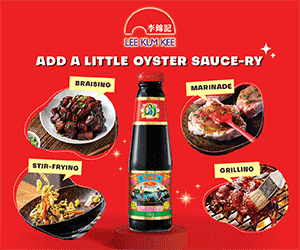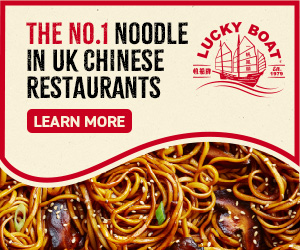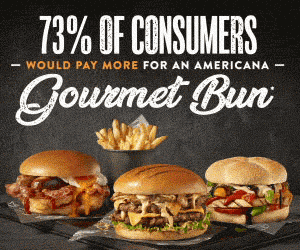Feature: On the road again

Consumers can’t get enough of ordering restaurant-quality dishes direct to their doors, so your offering needs to reel ’em in and keep ’em wanting more
There’s nothing better than top-notch nosh from the comfort of home. It’s indulgent, it’s delicious – and it saves having to cook, freeing us from the mind-numbing job of washing up. As the takeaway and delivery category continues its upward trajectory, this service is no longer a ‘nice to have’ but an absolute necessity. It’s big business for those who get it right – and a post-pandemic mother lode for those at the top of the game.
Delivery boom
Takeaway and delivery was a lifeline for hospitality throughout the pandemic. It’s the only category that came out of lockdown stronger than when it went in, with restaurants and delivery platforms across the country reaping bountiful rewards. And consumers still have a big appetite for this service, with a recent CGA & Slerp Hospitality at Home Tracker revealing that delivery sales across Britain’s managed groups were 357% higher than the pre-Covid levels of April 2019.
“Despite restrictions easing, takeaway and delivery is still ascending over dining out, and I think it will stay that way. Habits have changed. Consumers know they get more bang for their buck with takeaway.” says Jaseep Singh, owner of the Little Curry House in Glasgow’s West End. “Takeaways and deliveries are our bread and butter and we’re good at them.”
Singh says that before the pandemic, earnings from the takeaway and dine-in arms of the business were an even 50/50 split, but now he estimates that takings are 75/25 in favour of takeaway.
“I think of it as an advert for the restaurant,” adds Singh. “There’s no ceiling with takeaways beyond the capacity of your kitchen – you’re not bound by the number of chairs or tables you have, and we can cope with demand.”
Ahead of the curve
Some brands had their delivery services established long before the first lockdown.
“We have always offered local delivery services from both restaurants in Rugby and Leamington Spa in Warwickshire,” says Charles Harris, founder of Libertine Burger. “We do what we do and we do it really well. That means sticking to burgers, fries and sides and ensuring they’re always guaranteed to wow – whether customers are eating in with us or enjoying our food at home.”
Adaptability, innovative thinking and a desire to stay a step ahead of trends will serve brands well in this business – as seen in Libertine’s pivot to home meal kits at the height of the pandemic, when trading was severely restricted. “Our burger kits remain a way for people who aren’t local to get the chance to try our burgers, with their signature patties and bespoke house-made sauces, without having to travel across the country,” Harris explains.
“Despite restrictions easing, takeaway and delivery is still ascending over dining out, and I think it will stay that way. Habits have changed. Consumers know they get more bang for their buck with takeaway.” says Jaseep Singh, owner of the Little Curry House in Glasgow’s West End. “Takeaways and deliveries are our bread and butter and we’re good at them.”
Singh says that before the pandemic, earnings from the takeaway and dine-in arms of the business were an even 50/50 split, but now he estimates that takings are 75/25 in favour of takeaway.
“I think of it as an advert for the restaurant,” adds Singh. “There’s no ceiling with takeaways beyond the capacity of your kitchen – you’re not bound by the number of chairs or tables you have, and we can cope with demand.”
Choose your weapon
There are plenty of dishes and cuisines that lend themselves well to takeaway and delivery. Arguably, the most recognisable on the circuit is the humble chip. “Quick and easy to cook and serve, able to be eaten on the move, served on their own or as an accompaniment to other main dishes, chips are a staple of virtually every takeaway and delivery offering,” comments Steve Elliot, sales director at industry suppliers Valentine & CuisinEquip.
For Daniel Alvarado, food and beverage director at Chelsea-based Izakaya restaurant Dinings SW3, sushi and sashimi are firm favourites among guests ordering for delivery. A perk of these particular fares is that you don’t have to worry about keeping them hot – but you do have to think about keeping them cool and tasting fresh throughout the transportation process. “Nasu-dengaku (double-cooked aubergine with caramelised sweet miso) is another cult dish at Dinings SW3 – it has even featured on Saturday Kitchen,” notes Alvarado.
At Park’s Edge Bar & Kitchen in London’s Herne Hill, a restaurant that predominantly serves seasonal British food, burgers are on-the-go best-sellers. “They probably perform well because people generally love burgers. They’re used to ordering them in at home and are attracted to the lower price point versus other mains,” suggests the restaurant’s owner, Claudia McKenzie. “We try and assert the quality usually associated with our restaurant as a key selling point for those buying for takeaway or delivery.”
Pizza is another takeaway staple, accounting for a market segment worth £2.1bn. “Pizza represents one of the most reliable comfort foods and is a huge best-seller; its versatility can easily address specific dietary needs and operators can benefit from a quick-to-prepare, cost-effective menu choice which transports well for delivery or takeout,” says Charlotte Perkins, trade marketing manager at pizza dough producer Pan’Artisan.
A testament to the versatility of pizza is Amélie Restaurants, a concept created by father-son duo Regis and Alex Crepy. The brand has set itself apart in a saturated category by branching out into Flam-kuche – a type of flatbread pizza typically found in certain regions of Germany and France.
“Though it may look like a skinny pizza, the Flam-kuche is a thin, yeast-free dough spread with crème fraiche and a choice of delicious toppings that stay fresh and tasty as it crisps very quickly,” says Alex. The Crepys deliver their Flam-kuches as meal kits, with a choice of seven flavours, across the UK, while also operating a restaurant in Cambridge.
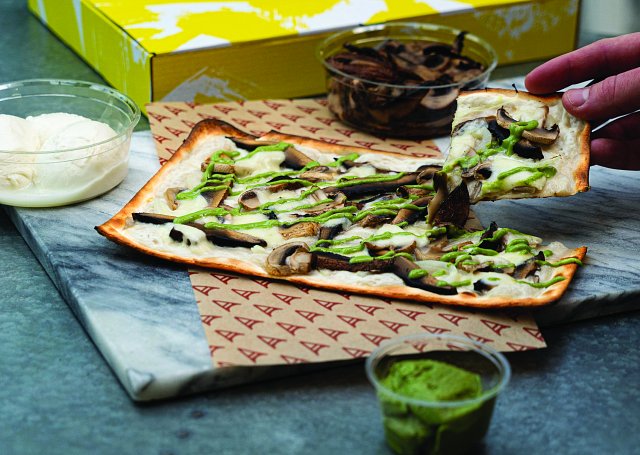
The wrap is another solid option, appealing to a broad audience, with Santa Maria’s Wrapfusion Report revealing that 30% of Brits enjoyed one at least twice a week in 2021. With an easy grab-and-go nature and a versatility that allows for vast switching up of fillings and flavours, the wrap allows kitchens to delve into a broad spectrum of dishes.
“Mexican is the obvious choice, scoring 45% of UK votes and 46% in ROI when it comes to wrap fillings,” says Nick Minchin, marketing manager at Santa Maria. “This translates to a big opportunity for operators looking to tap into an extra revenue stream, creating Mexican options including fajitas, burritos or nachos.
“Don’t skimp on the basics,” he adds. “Offer high-quality carriers, like large white or wholemeal tortillas, plus thick, round nachos which offer premium crunch.”
Plenty of Asian cuisines offer a similar scope for creativity – many of which are already tried and tested takeaway options, with Chinese, Indian and Thai all ranking in the top five in a 2021 YouGov survey.
“Consumers’ love for global cuisines means Asian foods are some of the most ordered throughout the takeaway and delivery markets,” says Greta Strolyte, brand manager of Lucky Boat noodles, a Westmill brand. “If budgets are too tight for restaurant dining, it’s a treat that can satisfy their needs with less impact on the purse.”
All about the journey
Crepy and the team at Amélie spent a lot of time trialling packaging to ensure the meal kits could be delivered safely around the UK. Above all else, the boxes had to be sturdy to prevent the ingredient containers being squashed. Ice packs ensure the box contents remain cool, while the whole parcel is kept to a weight with a reasonable charge for delivery. “We trialled a few of the bigger companies but eventually found a great, local, zero-emission courier in Cambridge. They work closely with us so that every package is delivered the next day.”
Holding onto punters old and new is all about delivering the very same standard of service for delivery as in-house. But while taste is always king, it wouldn’t be a restaurant-standard meal if it didn’t look the part upon arrival.
“With so much emphasis on the quality of food and delivering an authentic dish, it only made sense for our packaging to match these standards,” comments Navid Prasad, culinary director at Ritu Seasons of India in London’s St John’s Wood. “Our customers deserve more than oily metal tins. Rather, we use unique food-grade tins that were specially designed to hold hot curries and seal in the flavour. These have become an instant hit with guests, who have enjoyed and complimented our choice of packaging since their first use.”
And it goes without saying that if your customer ordered a dish that should be served hot, the last thing you want is for it to arrive in the opposite state. “Whatever hot products you’re serving quickly, from pies and pastries to burgers, pizza and curry, the most important thing is having the right equipment to serve and hold, guaranteeing that dishes can be delivered quickly and at an optimum temperature,” says Scott Duncan, MD for commercial oven supplier Unox.
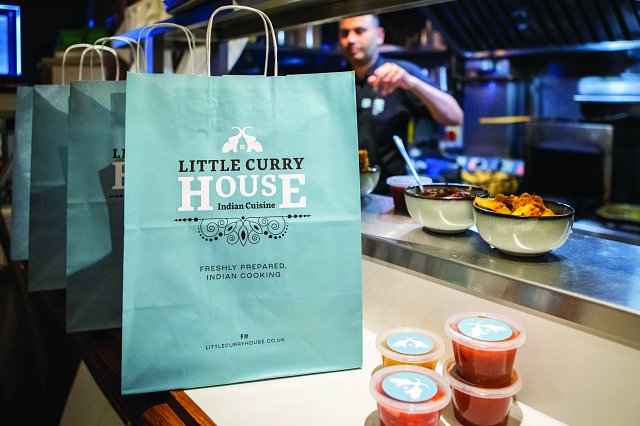
Partner up
As with pretty much every other aspect of modern life, the food ordering and delivery process has been swept up by the tide of digital transformation. This was accelerated by the pandemic, when venues had to rapidly adopt digital ordering and delivery services in order to trade. “During Covid, there was a clamour to adopt technology that made contact-free ordering possible,” says Alasdair Lindsay, head of hospitality sales at Hungrrr – feature-rich ordering technology dedicated to the hospitality industry. Hungrrr is white label, so the platform works as an extension of an operator’s own brand and business, helping them quickly build brand loyalty. “Operators just wanted a solution that they could integrate quickly and easily, without much consideration given to brand loyalty,” Lindsay adds. “Now there is greater awareness of the tech available.”
From JustEat to Deliveroo, UberEats and beyond, the industry isn’t short of established platforms that seamlessly connect consumers with their favourite restaurants.
“We partner with Deliveroo and UberEats, so there will occasionally be offers through their websites that people can redeem for takeaway,” says Harris. “But we started doing our own deliveries during the first lockdown and we do try to use them as much as possible. Using our own drivers means we can train them in all things Libertine and let them know the standards we expect.”
Delivery partners have their uses, but Libertine is by no means alone in its desire to lean more on its own in-house drivers. Singh says the Little Curry House takes a similar stance, avoiding fees that give the restaurant less flexibility on pricing.
“Delivery partners can be restrictive in terms of what you do with the menu and offering – especially around ingredients and portion sizes,” he explains. “We are on those apps but only for orders, choosing instead to use our own drivers, meaning we are never late as we control order flow. Customers can order from us direct and it actually works out cheaper.”
Whether you choose to focus on apps or rely on your own drivers, consumer expectations mean tech is still bound to be involved in the process in some form or other. When implementing such solutions, it’s crucial that operators conduct thorough research before investing. It’s essential for the tool to be reliable, user friendly and easy to navigate, otherwise your customers are likely to get lost along the way.
Quality, not quantity
The key to creating a standout delivery and takeaway menu is always flavour and consistency. Your goal is to meet the venue’s same high standards every time, leaving all customers feeling content and satisfied, whether they order for delivery or takeaway, or choose to dine in-house. As Fergus Martin, development chef for food manufacturer Major International, perfectly sums up: “Use quality, fresh and, where possible, seasonal ingredients. Combining these with a base product that achieves a rich depth of flavour and uniform consistency, chefs can create a dish that not only stands out on their menus, but also arrives with the customer in the best condition, helping to generate repeat business from regulars.”
So, there you have it operators – all you need to know to up your restaurant’s delivery game.


